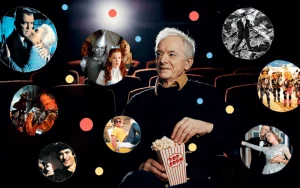Introduction
Film criticism has long been an essential element of the cinematic experience, offering audiences insights, evaluations, and deeper understandings of movies. Traditionally, film criticism was the domain of professional critics who published their reviews in newspapers, magazines, and academic journals. However, the advent of social media has significantly transformed this landscape. Platforms like Twitter, Facebook, Instagram, and YouTube have democratized film criticism, allowing anyone with an internet connection to share their opinions with a global audience.
This article explores the profound influence of social media on film criticism, examining how it has reshaped the way movies are reviewed, discussed, and consumed. We will delve into the historical context of film criticism, the rise of social media, the impact on professional critics, the emergence of new voices, and the broader implications for the film industry and audience engagement.
Historical Context of Film Criticism

1. Early Beginnings
Film criticism began to take shape in the early 20th century, coinciding with the rise of the motion picture industry. Early film reviews were often found in newspapers and focused primarily on the entertainment value of movies. Critics like Frank E. Woods and Robert E. Sherwood were among the pioneers who established film criticism as a legitimate field.
2. The Golden Age of Film Criticism
The mid-20th century is often considered the golden age of film criticism. Prominent critics such as Pauline Kael, Andrew Sarris, and Roger Ebert became influential figures, shaping public opinion and contributing to the discourse on cinema. Their reviews were published in major newspapers and magazines, and their opinions carried significant weight in the industry.
3. The Academic Turn
In the latter half of the 20th century, film criticism began to gain academic recognition. Scholars like André Bazin and Laura Mulvey introduced theoretical frameworks that deepened the analysis of films. Academic journals and film studies programs emerged, further legitimizing film criticism as a scholarly pursuit.
The Rise of Social Media
1. The Democratization of Opinion
The advent of social media in the early 21st century brought about a seismic shift in the landscape of film criticism. Platforms like Twitter, Facebook, and YouTube provided a space where anyone could share their thoughts on movies, regardless of their professional background. This democratization of opinion has had both positive and negative consequences.
2. Instantaneous Feedback
One of the most significant changes brought about by social media is the speed at which film criticism can be disseminated. In the past, reviews would be published days or even weeks after a film’s release. Today, audiences can share their reactions in real-time, often within minutes of watching a movie. This instantaneous feedback has made film criticism more dynamic and immediate.
3. The Role of Influencers
Social media has given rise to a new breed of film critics: influencers. These individuals, often with large followings on platforms like YouTube and Instagram, have become influential voices in the world of film criticism. Unlike traditional critics, influencers often blend personal anecdotes, humor, and multimedia elements into their reviews, making them more relatable to a younger audience.
Impact on Professional Critics

1. Challenges and Opportunities
The rise of social media has presented both challenges and opportunities for professional film critics. On one hand, the democratization of opinion has led to a proliferation of voices, making it harder for professional critics to stand out. On the other hand, social media has provided critics with new platforms to reach wider audiences and engage with readers in real-time.
2. The Erosion of Authority
One of the most significant challenges faced by professional critics is the erosion of their authority. In the past, critics from established publications held considerable sway over public opinion. Today, their voices are just one among many, competing with influencers, bloggers, and everyday moviegoers. This shift has led to a more fragmented and diverse landscape of film criticism.
3. Adaptation and Evolution
To remain relevant in the age of social media, many professional critics have adapted their approach. Some have embraced social media platforms, using them to share shorter, more immediate reactions to films. Others have incorporated multimedia elements, such as video reviews and podcasts, to engage with audiences in new ways. This evolution has allowed professional critics to maintain their influence while embracing the changing dynamics of film criticism.
The Emergence of New Voices
1. Diverse Perspectives
One of the most positive outcomes of the rise of social media is the emergence of diverse voices in film criticism. In the past, the field was dominated by a relatively homogenous group of critics. Today, social media has provided a platform for critics from diverse backgrounds, including women, people of color, and members of the LGBTQ+ community, to share their perspectives. This diversity has enriched the discourse on cinema, bringing new insights and viewpoints to the forefront.
2. Grassroots Movements
Social media has also facilitated the rise of grassroots movements in film criticism. Campaigns like OscarsSoWhite and MeToo have highlighted issues of representation and inequality in the film industry, sparking important conversations and driving change. These movements have demonstrated the power of social media to amplify marginalized voices and hold the industry accountable.
3. The Role of Communities
Online communities have played a crucial role in the evolution of film criticism. Platforms like Reddit, Letter boxed, and specialized Facebook groups have created spaces where cinephiles can come together to discuss and analyze films. These communities foster a sense of belonging and provide opportunities for in-depth discussions that go beyond the surface-level reactions often found on social media.
Broader Implications for the Film Industry

1. Marketing and Promotion
The influence of social media on film criticism has had significant implications for the film industry, particularly in the realm of marketing and promotion. Studios and filmmakers now recognize the power of social media buzz in driving box office success. Positive reactions on platforms like Twitter and Instagram can generate significant hype, while negative reviews can lead to backlash. As a result, studios often engage with influencers and social media campaigns to promote their films.
2. Audience Engagement
Social media has transformed the way audiences engage with films. Viewers can now participate in real-time discussions, share their reactions, and connect with fellow moviegoers from around the world. This increased engagement has created a more interactive and communal viewing experience, blurring the lines between critics and audiences.
3. The Future of Film Criticism
As social media continues to evolve, so too will the landscape of film criticism. Emerging technologies, such as virtual reality and artificial intelligence, may further transform the way films are reviewed and discussed. Additionally, the ongoing democratization of opinion will likely lead to even greater diversity in the voices shaping the discourse on cinema.
Conclusion
The influence of social media on film criticism is undeniable. It has democratized the field, giving rise to new voices and perspectives, while challenging the authority of traditional critics. Social media has also transformed the way audiences engage with films, creating a more dynamic and interactive viewing experience. As the landscape of film criticism continues to evolve, it will be essential to embrace these changes while remaining mindful of the broader implications for the film industry and audience engagement.




